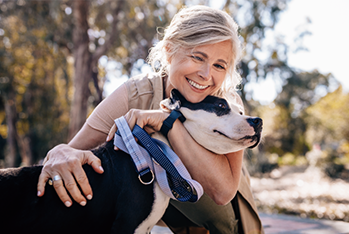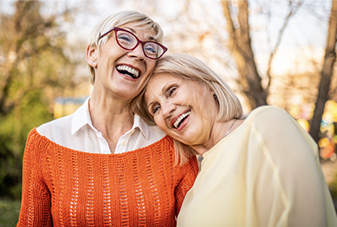And the gift begins here—by making mammograms and self-exams a priority. The simple act of taking care of yourself, and making sure you’re there for family and friends, is a one-of-a-kind human gift. Something else; showing care for yourself can be beautiful and inspiring. Friends will follow your example—they become aware, schedule mammograms too, stay healthy, and are there for you. That’s the kind of gift that keeps on giving.

It may sound trite, but cancer doesn’t wait. That’s why you can’t, either. When it comes to taking care of your health, a sense of urgency is so important. Stay up to date on your breast screenings, even when you feel fine.
An advocate, a teacher, a guide, a supporter. Our doctors and health care providers are right here for you, and we're here now, for all of you. It’s just a matter of you taking the first step and reaching out. We’ll take it from there.

The answer is yes. Being 50 or older, starting your period before age 12, and entering menopause after age 55 are all critical factors that can increase risk. So do they apply to you, and how? The only way to get meaningful answers and clear direction is to have a conversation with your doctor or health care provider. And, on your to-do list, that conversation is one that should be a priority.

When performing your monthly breast self-exam, look for the following in your breasts and underarms: a change in the size or shape, swelling, dimpling of the skin, rashes or sores, changes in color, newly inverted nipples, nipple discharge that isn’t breast milk, chronic pain, and lumps. If you notice any of these changes, take some notes, and schedule a visit with your doctor or health care provider to discuss.
This is a simple fact that should comfort and motivate you at the same time. The earlier cancer is detected, the more likely it is to be localized. And women who receive a diagnosis of localized breast cancer have a 99% 5-year survival rate. To you, that means routine screenings and early detection are more important than ever. Now is the time to take the first step.

Take a moment to let your friends and family know the importance of routine breast cancer screenings and monthly breast self-exams. Pledge to schedule your mammogram today, and remind a friend to schedule her mammogram, too. Everyone needs a mammogram buddy!
Instead, wear a top with pants or a skirt so you can keep your bottoms on during the exam.
This way, your doctor or health care provider can compare your screenings year after year.
Choose a time in your cycle when your breasts won’t be tender or swollen.
This way, your doctor or health care provider can provide more personalized care.
Refrain from using perfume, lotions, or deodorant on or around your breasts, including your arms and armpits.
There is no need to fast prior to your exam, so feel free to enjoy some food beforehand.